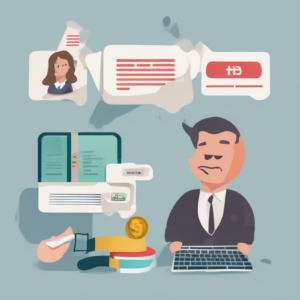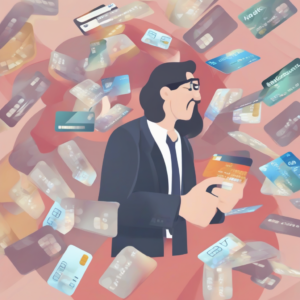From Debt to Penny: A Comprehensive Guide to Financial Recovery
The crushing weight of debt can feel insurmountable. The cycle of minimum payments, accruing interest, and the constant anxiety can be debilitating. But escaping this cycle is possible. This guide provides a practical, step-by-step approach to navigating the path from overwhelming debt to achieving financial stability, even if you’re starting with just a penny.
Understanding Your Debt
- Identify all your debts: List every loan, credit card, medical bill, or other outstanding debt. Note the balance, interest rate, minimum payment, and due date for each.
- Calculate your total debt: Add up all the balances to get a clear picture of your overall debt burden.
- Analyze your interest rates: High-interest debts, such as payday loans or credit cards with high APRs, should be prioritized for repayment.
- Assess your income and expenses: Create a detailed budget to understand your monthly income and expenses. This will help determine how much money you can allocate to debt repayment.
Developing a Debt Repayment Strategy
Several methods exist for tackling debt. The most effective strategy depends on your individual circumstances and debt profile.
1. The Debt Snowball Method
- Prioritize by smallest balance: Pay off your smallest debt first, regardless of its interest rate. This provides early wins and motivation to continue.
- Minimum payments on other debts: Make minimum payments on all other debts while focusing your extra funds on the smallest debt.
- Avalanche effect: Once the smallest debt is paid off, roll the amount you were paying on it into the next smallest debt, creating a snowball effect.
- Psychological benefits: This method’s psychological boost can be crucial for maintaining momentum and staying motivated.
2. The Debt Avalanche Method
- Prioritize by highest interest rate: Focus on paying off the debt with the highest interest rate first, minimizing the total interest paid over time.
- Mathematical efficiency: This method is mathematically more efficient, saving you money in the long run.
- Potential for slower initial progress: The initial progress may be slower than the snowball method, which could impact motivation.
- Requires discipline and focus: Sticking to this method requires strong discipline and a long-term perspective.
3. Debt Consolidation
- Combine multiple debts into one: Transfer high-interest debts to a lower-interest loan, such as a personal loan or balance transfer credit card.
- Simplified repayment: Managing one payment instead of many simplifies the repayment process.
- Potential for lower interest rates: This can significantly reduce the total interest paid.
- Potential fees and risks: Be aware of potential fees associated with consolidation and the risk of falling back into debt if not managed carefully.
4. Debt Management Plan (DMP)
- Negotiate with creditors: A credit counseling agency negotiates with your creditors to lower interest rates and consolidate payments into one monthly payment.
- Reduced interest rates and fees: Creditors often agree to lower rates and waive fees to avoid costly legal action.
- Professional guidance: A credit counselor provides guidance and support throughout the repayment process.
- Negative impact on credit score: A DMP will likely have a negative impact on your credit score.
5. Bankruptcy (Last Resort)
- Legal process to discharge debts: Bankruptcy is a legal process that can discharge some or all of your debts.
- Severe consequences: Bankruptcy has severe long-term consequences for your credit score and financial future.
- Should be considered only as a last resort: It should be considered only after exploring all other options and with the guidance of a bankruptcy attorney.
- Types of bankruptcy: Chapter 7 and Chapter 13 are the two main types of bankruptcy, each with different implications.
Building a Budget and Managing Finances
- Track your income and expenses: Use budgeting apps, spreadsheets, or journals to meticulously track your income and expenses.
- Identify areas for savings: Look for areas where you can cut back on spending, such as subscriptions, entertainment, or dining out.
- Prioritize needs over wants: Focus on essential expenses and postpone non-essential purchases.
- Automate savings: Set up automatic transfers to a savings account to build an emergency fund.
- Increase your income: Explore opportunities to earn extra income, such as a side hustle or part-time job.
Seeking Professional Help
- Credit counseling agencies: These agencies offer debt management plans and financial education.
- Financial advisors: Financial advisors can provide personalized advice and guidance on managing your finances.
- Bankruptcy attorneys: Consult a bankruptcy attorney if you’re considering bankruptcy as a last resort.
Maintaining Financial Health After Debt Repayment
- Continue budgeting and saving: Maintain a budget and continue saving regularly to avoid falling back into debt.
- Build an emergency fund: An emergency fund provides a financial cushion for unexpected expenses.
- Monitor your credit score: Regularly check your credit report and score to identify any issues.
- Avoid accumulating new debt: Use credit cards responsibly and avoid taking on new debt unless absolutely necessary.
- Invest wisely: Once you are debt-free, start investing to build wealth for the future.
The Power of Small Steps
Even if you feel overwhelmed by debt, remember that progress is made one step at a time. Starting with a penny, or even a dollar, and consistently applying a repayment strategy, will eventually lead to financial freedom. The key is commitment, discipline, and seeking help when needed.
This journey from debt to penny requires patience and perseverance. But with a well-defined plan, consistent effort, and the right support, you can achieve financial stability and build a brighter future.





